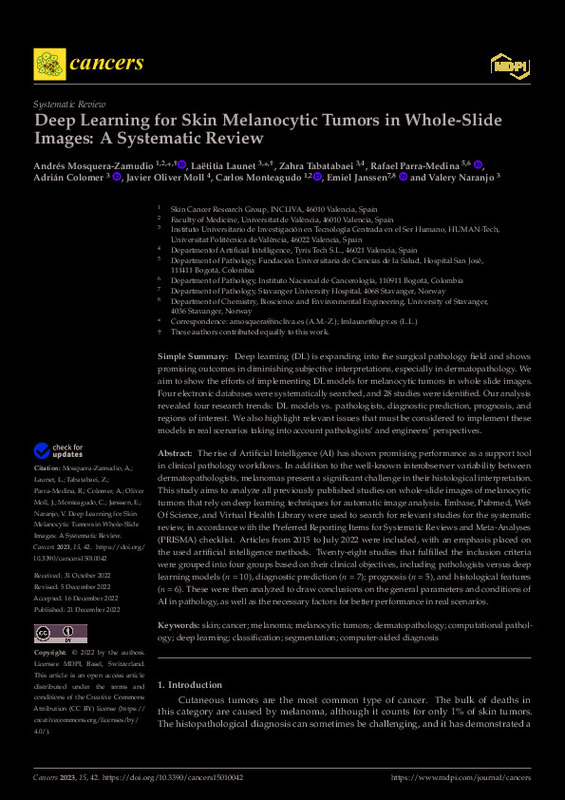JavaScript is disabled for your browser. Some features of this site may not work without it.
Buscar en RiuNet
Listar
Mi cuenta
Estadísticas
Ayuda RiuNet
Admin. UPV
Deep Learning for Skin Melanocytic Tumors in Whole-Slide Images: A Systematic Review
Mostrar el registro completo del ítem
Mosquera-Zamudio, A.; Launet, L.; Tabatabaei, Z.; Parra-Medina, R.; Colomer, A.; Oliver Moll, J.; Monteagudo, C.... (2023). Deep Learning for Skin Melanocytic Tumors in Whole-Slide Images: A Systematic Review. Cancers. 15(1):1-19. https://doi.org/10.3390/cancers15010042
Por favor, use este identificador para citar o enlazar este ítem: http://hdl.handle.net/10251/192533
Ficheros en el ítem
Metadatos del ítem
| Título: | Deep Learning for Skin Melanocytic Tumors in Whole-Slide Images: A Systematic Review | |
| Autor: | Mosquera-Zamudio, Andrés Tabatabaei, Zahra Parra-Medina, Rafael Oliver Moll, Javier Monteagudo, Carlos Janssen, Emiel | |
| Entidad UPV: |
|
|
| Fecha difusión: |
|
|
| Resumen: |
[EN] Simple Summary Deep learning (DL) is expanding into the surgical pathology field and shows promising outcomes in diminishing subjective interpretations, especially in dermatopathology. We aim to show the efforts of ...[+]
|
|
| Palabras clave: |
|
|
| Derechos de uso: | Reconocimiento (by) | |
| Fuente: |
|
|
| DOI: |
|
|
| Editorial: |
|
|
| Versión del editor: | https://doi.org/10.3390/cancers15010042 | |
| Código del Proyecto: |
|
|
| Agradecimientos: |
This work has received funding from the European Union's Horizon 2020 Programme for Research and Innovation, under the Marie Sklodowska Curie grant agreement No. 860627 (CLARIFY). The work is also supported by project ...[+]
|
|
| Tipo: |
|









